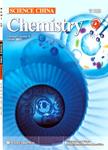Solvent extraction of U(VI) by trioctylphosphine oxide using a room-temperature ionic liquid
Solvent extraction of U(VI) by trioctylphosphine oxide using a room-temperature ionic liquid作者机构:Key Laboratory of Nuclear Radiation and Nuclear Energy Technology Key Laboratory for Biomedical Effects of Nanomaterials & Nanosafety Institute of High Energy Physics Chinese Academy of Sciences School of Radiological & Interdisciplinary Sciences Soochow University
出 版 物:《Science China Chemistry》 (中国科学(化学英文版))
年 卷 期:2014年第57卷第11期
页 面:1432-1438页
核心收录:
学科分类:081702[工学-化学工艺] 081704[工学-应用化学] 08[工学] 0817[工学-化学工程与技术] 081701[工学-化学工程]
基 金:supported by the National Natural Science Foundation of China(91326202,11105162,91126006,11275219) the Strategic Priority Research Program of the Chinese Academy of Sciences(XDA030104)
主 题:uranium solvent extraction ionic liquid trioctylphosphine oxide
摘 要:The unique physical and chemical properties of room-temperature ionic liquids(RTILs) have recently received increasing attention as solvent alternatives for possible application in the field of nuclear industry, particularly in liquid-liquid separations of radioactive nuclides. We investigated solvent extraction of U(VI) from aqueous solutions into a commonly used ionic liquid 1-butyl-3-methylimidazolium bis(trifluoromethylsulfonyl)imide([C4mim][NTf2]) using trioctylphosphine oxide(TOPO) as an extractant. The effects of contact time, TOPO concentration, acidity, and nitrate ions on the U(VI) extraction are discussed in detail. The extraction mechanism was proposed based on slope analysis and UV-Vis measurement. The results clearly show that TOPO/[C4mim][NTf2] provides a highly efficient extraction of U(VI) from aqueous solution under near-neutral conditions. When the TOPO concentration was 10 mmol/L, the extraction of 1 mmol/L U(VI) was almost complete( 97%). Both the extraction efficiency and distribution coefficient were much larger than in conventional organic solvents such as dichloromethane. Slope analysis confirmed that three TOPO molecules in [C4mim][NTf2] bound with one U(VI) ion and one nitrate ion was also involved in the complexation and formed the final extracted species of [UO2(NO3)(TOPO)3]+. Such a complex suggests that extraction occurs by a cation-exchange mode, which was subsequently evidenced by the fact that the concentration of C4mim+ in the aqueous phase increased linearly with the extraction percent of U(VI) recorded by UV-Vis measurement.



